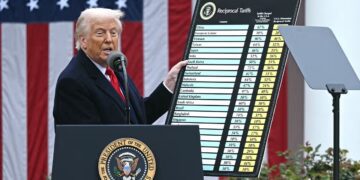By John F. Di Leo -
In September, October, and November, the dead voted.
This is stated as fact, by reporters and politicians, by attorneys and prosecutors. But it makes no sense. Zombies and vampires are fictional, the dead can’t really vote. So what does it mean when people say they did?
Well, sometimes, there’s a simple explanation: through the use of such tools as traditional absentee ballots and the recent explosion of mail-in voting and “early voting,” it’s possible for a person to vote legally in September or October and die on or before election day.
This does happen occasionally, but it’s a miniscule percentage of the “dead vote” that we’re talking about here.
In some states, such votes are accepted, but this is not universal. The real idea of an election, after all, is that it’s a snapshot in time, the choice of the public on a single day. Therefore, even if people are allowed to vote early, if they die by election day, those votes should not count, because they do not represent a member of the electorate on Election Day itself. States that do allow such rare votes to count are denying the idea of an Election Day, and are rather viewing it as an “election season,” which contradicts both American tradition and other existing law in those states.
But this isn’t a significant part of the issue in the news anyway, so let’s turn our focus to the big issue: the appearance of votes by people who were already dead at the time – people who therefore could not possibly have voted, and are therefore clearly proof of some form of fraud.
Identifying the Electorate:
Traditionally, the first step in the process is identifying who is able to vote. A jurisdiction allows registration in which people officially sign up for the privilege, proving their citizenship and their residence with proper identification.
The government sets a registration deadline, usually a month or so before the election, to have time to mail out a confirmation postcard to the address provided. If the Post Office returns it, they know the registration was faulty, and they erase it before Election Day, so the false registration cannot be used. Over the years, the county government (or state, or other jurisdiction) maintains these voter rolls by mailing out those postcards, and deleting the ones that get “returned to sender.”
If you move or die, in theory, the Post Office will know to act appropriately, and the government will update their records… so, even though voting records will always continue to have some errors in them for a while (people are always moving in and out; people are always dying and being born), such errors shouldn’t remain on the rolls for long. If jurisdictions do what they are supposed to, fraudulent registrations should be removed in weeks, and once-valid-but-no-longer registrations should be purged between elections.
Injecting Error into the Voter Rolls
And thus it was, at least, until party machines began to notice the potential value of maintaining inaccurate lists.
What if they don’t pay the post office for a return-to-sender if the address has changed? What if they allow registration right up to Election Day so that no such check can take place? What if they allow registration without requiring proof of address or citizenship? What if they automate voter registration as a direct consequence of filing for a driver’s license or other state ID?
Each of these steps would reduce the traditional protections in the official voting rolls, making fraud easier and easier with every dilution and every successive year.
Today, we have many states in which the voter rolls include hundreds of thousands of bad names – people who moved away or died years ago, people who have multiple homes and should be voting from their other states, not this one, even foreigners who were here on a work visa or college student visa and have long since returned to their home countries (but who, as non-citizens, had no right to vote even then).
On top of all this, the ease of registration in many jurisdictions has allowed the rolls to be filled with completely fictional registrations, made by the kind of people paid per name in campaign or party voter registration drives – both real identities and completely fictional identities, assigned to post office boxes and private rental mailboxes, or to nonexistent apartment numbers in apartment building lobbies controlled by party loyalists.
As the years go by, such voter lists become longer and longer, giving the impression of more voters in a given jurisdiction than there are, or even could be. And without legitimate human owners for those names and addresses, the practice leaves dozens, or even hundreds, of registrations available, ripe for the taking, if only a corrupt party hack wants to take advantage of it.
Traditional Schemes
The Democrat machines of such big cities as Chicago, Philadelphia, Cleveland, and Detroit have always had certain standard practices for taking advantage of these extra names on the voter rolls.
Where there were known dead people or known fictional people in a precinct who hadn’t yet voted by Election Day, the machine pollworkers would take advantage of lulls to cast ballots on their behalf. Whenever the place was empty in the midmorning or midafternoon… or if necessary, after the polls were closed, before they started the counting process… they could methodically check off the names and create ballots for them.
After all, what’s to fear? How would they get caught, if the people were dead or never existed in the first place? It's not like a dead or nonexistent person would show up in person to claim his ballot. And so it is that for generations, crooked pollworkers from crooked party organizations have added five, ten, twenty or more votes in their precincts. Doesn’t sound like a lot, does it? But there are an awful lot of precincts… hundreds of thousands, in fact.
Readers of a certain age, in fact, will remember years ago, when the big cities were always the last to turn in their counts. “Why are they always so late, in Chicago, in Detroit, in Cleveland?” people would ask. “Why does counting take them so long?” It didn’t. The counting didn't usually take them any more time than it took anyone else. They just didn’t start as soon, because they were still filling out ballots, as many as their bosses told them they needed, before they could shut it down and start counting. The more desperate the situation, the later they finally sat down to start counting.
But don’t think it all waited until Election Day. Another part of the traditional method was always to make use of the registrations that were tied to addresses the party controlled – the apartment lobbies where the landlord or the super could pick up the mail for nonexistent or deceased tenants… the nursing home mailrooms where an office clerk could pick up mail for those who had gone ahead to hospice or passed away… the residence managers in college dorms who could cross-reference the lists against students who had graduated and moved away. In all these cases, there was someone to not only keep that voter confirmation postcard from getting returned-to-sender, it was also someone who could request absentee ballots in their names. Five, ten, twenty names in a college dorm, apartment building or nursing home, all with properly executed absentee ballots, all filed by a party acolyte.
Does this sound rare? It’s not.
Impossible to tell how many such cases there are; it varies from city to city and even ward to word. One apartment building might be as crooked as the day is long, while the apartment building next door might be perfectly honest. All we know for sure is that for generations, these practices have been common, and have been keeping corrupt ward bosses busy and their local pols employed long enough to get their taxpayer-funded pensions.
Modern Schemes
In addition to the traditional methods listed above – and many more related methods left off here for lack of space – there are a few new ones, introduced only since the dawn of the computer, and particularly, the modern electronic tabulation systems.
Today, with some states, with some systems, voters can show up and vote on a touchscreen for immediate tabulation, without ever creating a paper record.
If that sounds like an invitation for fraud, it certainly is… but it gets worse. In some states, with some systems, voter registration can occur onsite, on election day, right before casting a vote. This means that if a corrupt party, or corrupt campaign, or other corrupt entity, wanted to exploit these opportunities, the opportunity is there to both download a database of new registrations and cast votes for each one, at the same time, the very same day.
One might think this would raise eyebrows. Most jurisdictions have relatively stable electorates from year to year. Low turnouts in local elections, medium turnouts in midterm and state elections, larger turnouts in presidential years. Traditionally, one could study the turnout from year to year, figuring in the type of election and the district’s changes in population, and see stable voting patterns.
In 2020, a few jurisdictions saw huge spikes in turnout – even huge in comparison to past high-turnout presidential years like 2008, these spikes explained away by the excuse that mail-in ballots, same-day registration, and similar tools made voting so easy, even former nonvoters managed to find the time, this time. A convenient explanation. Very difficult to disprove without a thorough review of the voter rolls, and an audit of the voters themselves.
A recount, after all, just checks to see if the first count of ballots was correct, not to see if some of the ballots we're counting are legitimate or not. To find out if some of those ballots were invalid to begin with, you need a real audit, and a door-to-door review of the voting public, to find out whether those who are said to have voted really did, and if indeed all those voters really exist at all.
In 2020, however, the audit doesn’t have to be as detailed as it might, because this year’s lawbreakers were sloppier than usual. Preliminary studies indicate that there were hundreds of thousands of voters who appeared on multiple states' rolls… many of whom are recorded as having voted in multiple states this fall… many of whom are dead. Some 10,000 of such cases in Michigan alone, for example.
Not just dead in one state and alive in another, by the way; these are dead people’s records, uploaded into multiple states’ databases and assigned Democrat votes to cast.
Only such a method would allow the massive amount of fraud necessary to outpace the genuine votes earned by President Trump… but such a method wouldn’t allow for hundreds of patronage workers to create fictional names and addresses out of the air and load them in such short timeframes.
The system had to draw names from lists they could access by computer, in batches in the tens of thousands. And for whatever reason, this technique, impressive as it is in many ways, was unable to be cross checked against the death records, so tens of thousands – maybe hundreds of thousands – of dead people are recorded as having played a part in the 2020 election.
Some of this data is well known, and has been covered for generations by the local newspapers of America’s big cities. Some is brand new, as decades of warnings were disregarded in 2020 and the perfect storm of same-day registration, mail-in ballots and completely programmable tabulation systems made America in 2020 a particularly fertile ground for vote fraud.
No, the dead did not vote in 2020. Corpses didn't climb out of their coffins and stroll on down to the polling place on their own, any more than they issued absentee ballot requests, filled them in, and mailed them back from the comfort of their mausoleums.
When we say the dead voted, we just mean that someone – whether a person, a party, or a computer program – stole their names for registration and voting purposes… effectively cancelling out the votes of real citizens.
In an election in which millions of fabricated votes are counted, by definition, millions of live, legitimate, honest citizens are robbed of their right to vote.
Over the next few weeks, overwhelming evidence of these matters will be filed in state and federal court, from state to state, and the system will be shocked to its core, as people who have spent their lives in denial and disbelief are forced to acknowledge the plain truth of systemic, criminal, Democrat vote fraud in America.
It’s going to be a rough couple of months, but America should emerge stronger from these revelations, and the reform that is bound to follow.
Copyright 2020 John F Di Leo
John F. Di Leo is a Chicagoland-based trade compliance trainer, transportation manager, writer and actor. His columns have been found in Illinois Review since 2009.
A collection of John’s Illinois Review columns, the fictional series about vote fraud centered around a young volunteer named Pavel, has been published as The Tales of Little Pavel, and is available for purchase. For those unfamiliar with the many ways that vote fraud is practiced in America, this book is quite an eye-opener.
Don’t miss an article! Use the free tool in the margin to sign up for Illinois Review’s free email notification service, so you always know when new content is published!








